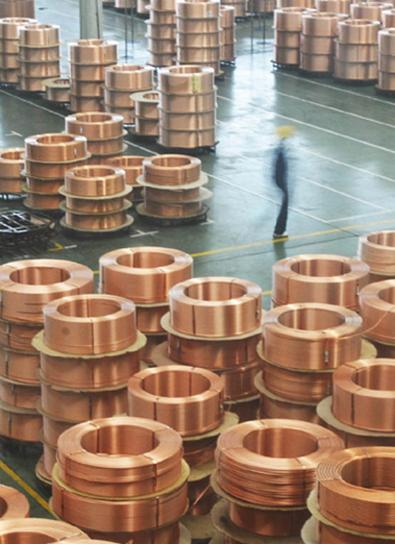
Taiwan Facing Up to the Airbase Survival Challenge
May 14, 2010
China’s Emergent Military Aerospace and Commercial Aviation Capabilities
May 20, 2010By: Project 2049 Institute |
China has long viewed copper as a strategic resource. It is the demand for the metal in key industries, rather than its scarcity, that has warranted the premium placed upon it by policy planners and the extractive industry. For China, copper is also key to its development, which compounds the strategic value of this versatile metal.
Recently, China’s demand for the metal has been sustained by buoyant economic outlook and the government stimulus injection into copper intensive industries – electricity and construction. Its growing consumption amidst the global financial crisis left some market watchers speculating that China was seeking to diversify investments to hedge against depreciation of their dollar-based assets. At a time when U.S. treasury bonds were at risk of under-performing, China appeared to be investing in inflation-proof resources that can be directly used for driving its economic engine.
Projections for long-term copper demand in China are promising despite a winding down of government stimulus spending. In addition to likely expansion of the electricity system (currently accounting for over half the copper use) and the construction sector, future demand from the hybrid and electrical car industry may also be significant. As a “lifestyle metal†– copper consumption also correlates with improvements in quality of life. Therefore, increasing personal wealth and growing consumer market will likely spur the production of goods, particularly household appliances with copper components.
In anticipation of global economic recovery and future demand, the State Council announced a plan last year to consolidate the country’s metal industry into three to five large producers by 2011. Acquisitions are tentatively underway with the country’s top two producers, the provincially-owned Jiangxi Copper Corporation and Tongling Nonferrous Metals Group, being propositioned by leading state-owned miners Minmetals and Aluminum Corporation of China (Chinalco). If the deals are secured, it will bring the country’s top producers under the control of the State-owned Assets Supervision and Administration of China (SASAC), which is the majority stockholder in Minmetals and Chinalco. Bringing key players under the state-owned enterprises is undoubtedly a reflection of industry’s strategic nature. In the past, SASAC has focused on creating ‘national champions’ in key sectors and supporting their international investments in alignment with the state’s strategic interests.
In the long term, restructuring will enhance Chinese corporations’ standing in the global copper market. Streamlining the industry will provide the fewer, and more powerful, players with greater bargaining power on copper imports as well as enhance competition in the industry. The rise of a few copper giants may also consolidate capacity for international acquisitions or joint ventures to strengthen China’s global resource expansion.




